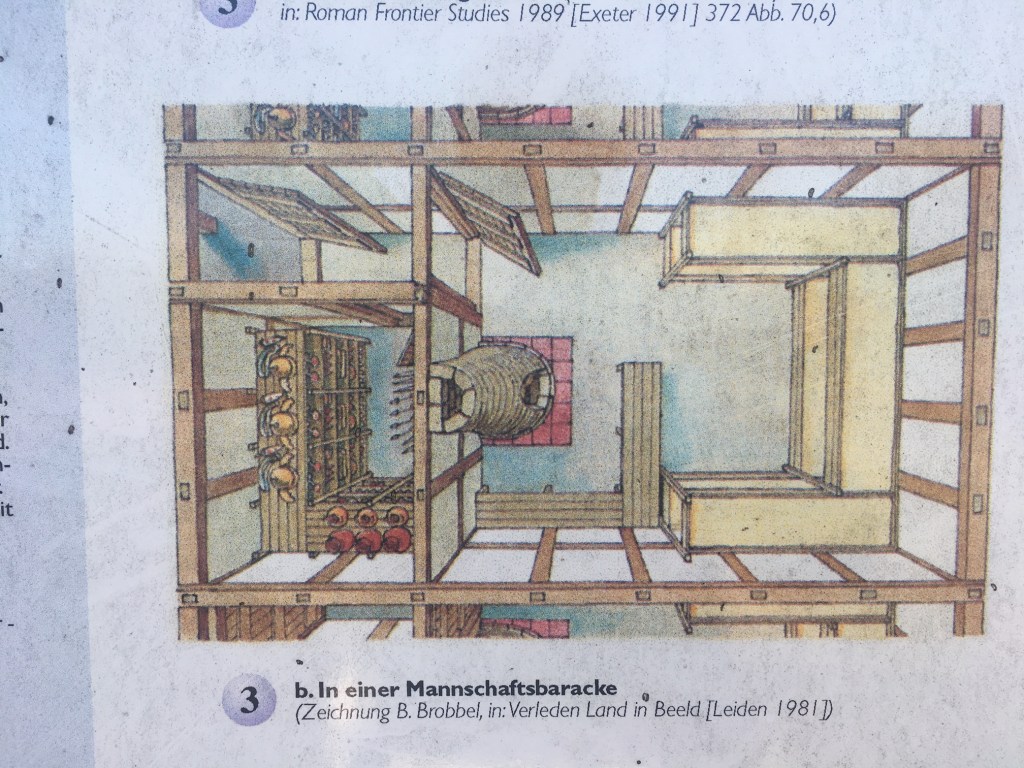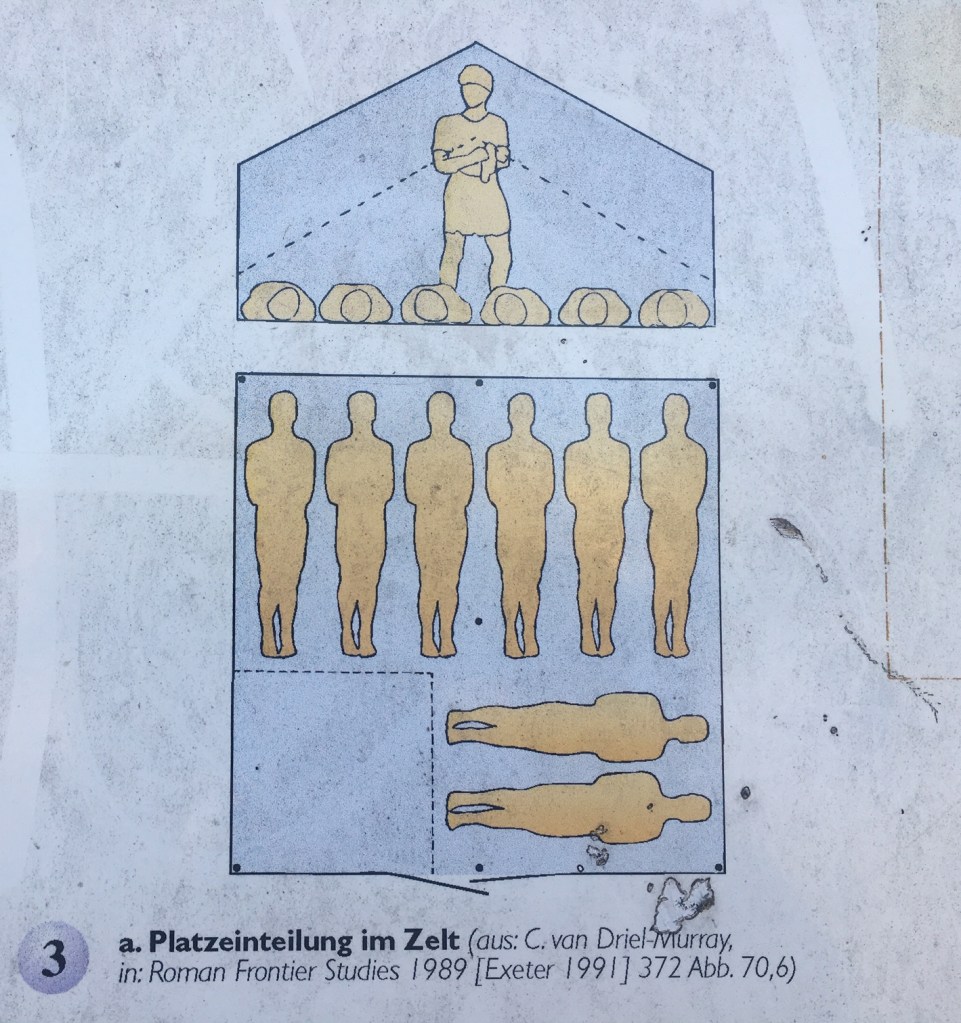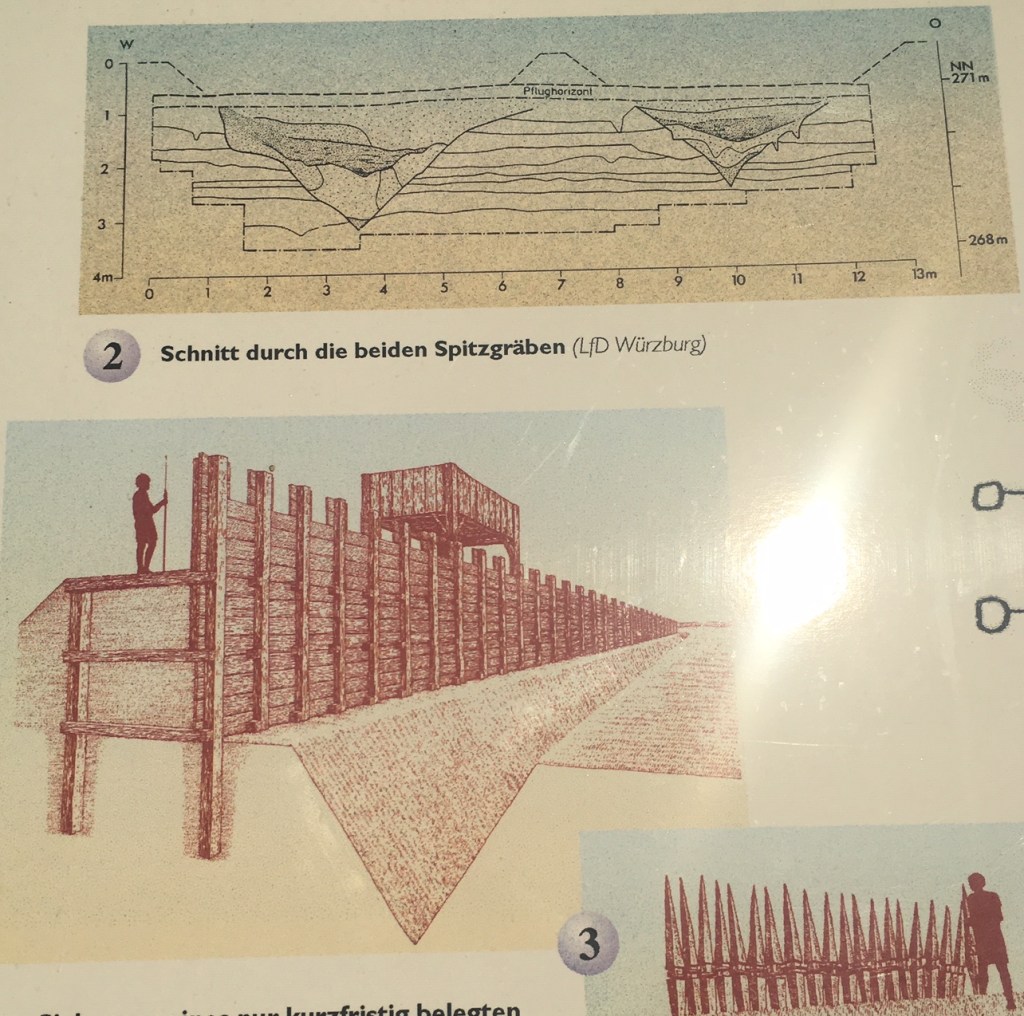Overall Impact: * 1 star Site of double legionary camp deep into ‘Free Germany’
Roman Features None!
Display ** 2 stars Eight scholarly board around the site of the camps
Reconstruction None!
Access ** 2 stars Parking in nearby housing estate, paths across the fields
Atmosphere ** 2 stars Curiously atmospheric, provided you have a very good imagination!
Other ***** 5 stars A very strategic and historically important site.
This one is very different site: it shows the diversity of Roman sites and the many ways you can experience the remains of the Empire.

Given the markings above why on earth have we posted Markbreit? Here’s the story…
On business in Germany, one of us had the opportunity to stay the weekend, but this involved driving from Bamberg to Frankfurt. Recalling that there was an Augustan-era Roman army base on the River Main, I checked it out on Wikipedia and found a reference to Marktbreit. Then, utilising the amazingly dense and (legally) extremely fast autobahn network, I drove on Saturday afternoon to the very picturesque little medieval town of Marktbreit on the Main. Arriving at just after 5pm, I found the little town museum had just closed but not despairing, there was very helpfully a leaflet in a box outside the door referring to the extensive Roman finds on display from ‘the site on the Kapellenberg’. Using Google maps I located the site up a very steep hill above the town.

There, beyond a suburb of houses, in a field I spied what looked like a distant information board and, parking the car, I marched over to it. This was one of a set of eight boards around what turned out to be a very large site indeed. I couldn’t see the next board but managed to relate the site diagram to Google maps and after a walk up the hill found the next board and then the next.

Frankly, there is absolutely nothing to be seen above ground, so the ‘eye of faith’ is required. However, what we have here in Marktbreit is the pivotal Roman conquest base in the south of Germania in the years AD4 to AD9. It was discovered in 1985 by aerial photography and caused a sensation since a Roman fortress so far east of the Rhine and north of the Danube had not been suspected. It is polygonal in shape and sits on a sloping plateau high above a bend of the River Main. It is 37ha – yes 37ha – in size and the palisade was 2.25km in length – large enough to accommodate two full legions and auxiliaries as well. It is speculated that the Ist and Vth legions were intended to be the garrisons.
The large camp is built over a Hallstatt Celtic settlement and an earlier 9ha Roman camp.
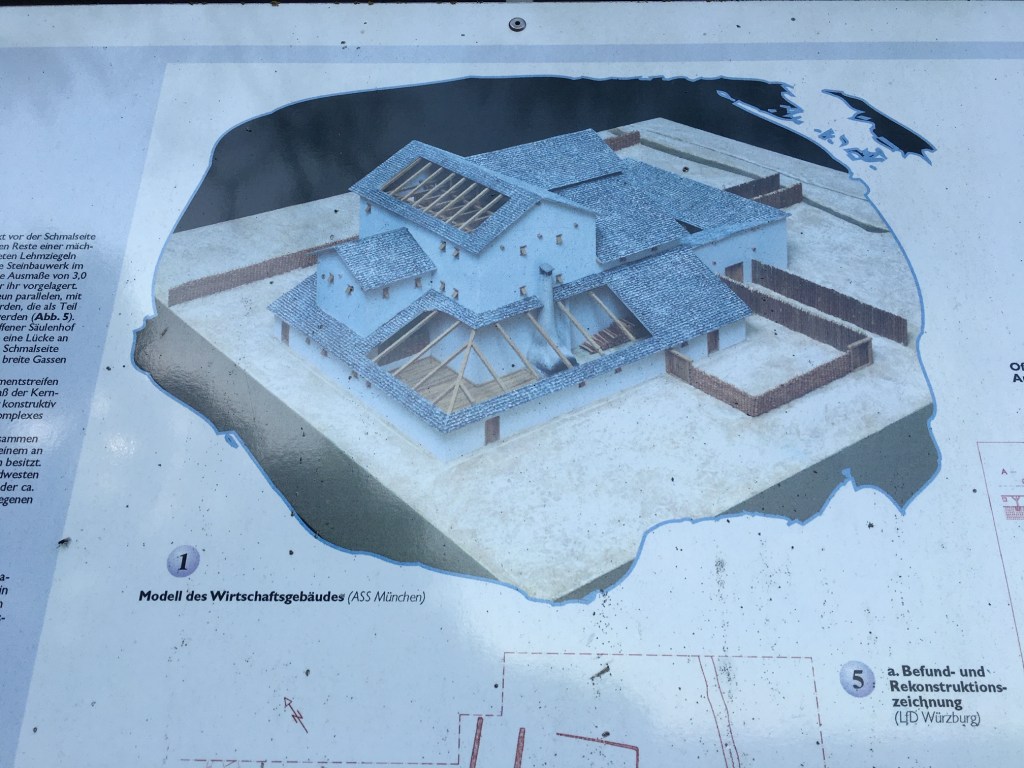
It appears to have been abandoned before it was used; interesting parallels here with Inchuthill nearly a century later in Scotland. The palisade, the Commandant’s House (praetorium) joined to a high HQ (principia), officers’ quarters, granaries and kilns had been finished. Six coins and a terra sigillata stamp indicate a time period of AD4 to AD9. This strongly suggests that Marktbreit was abandoned after the annihilation of Varus the Governor of Germania and his three legions, by Arminius (Herman) at the Teutoburger Wald in the north of Germany in AD9..
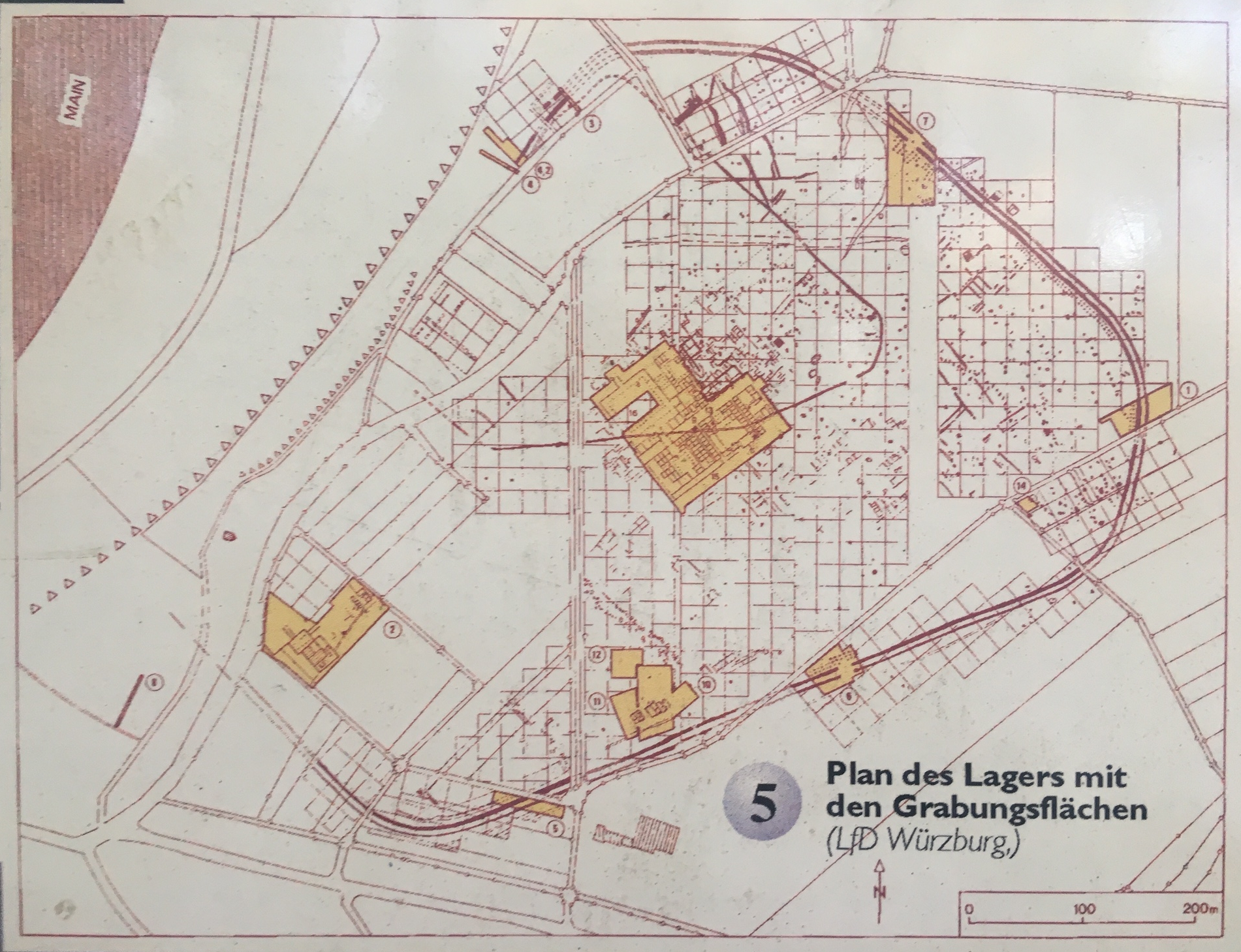
It is important to remember that the Roman High Command had by AD9 decided that Germania was conquered territory, and was a Province inside the Empire. Albeit it was imperfectly subdued but this would have been seen as just a matter of time: consider how long it had taken Caesar and his successors to subdue Gaul. Therefore, planting a double legionary fortress and combined administrative centre in the heart of the south, in the territory of the Hermanduri made great sense. It was at the crossing of the two east-west and north-south lines of penetration: due south was the route to Augusta Vindelicorum (Augsburg); due west down the Main to Moguntiacum (Mainz); east up the Main to Bohemia and the Marcomanni; and north east over the watershed to the River Saal and thence the Elbe.
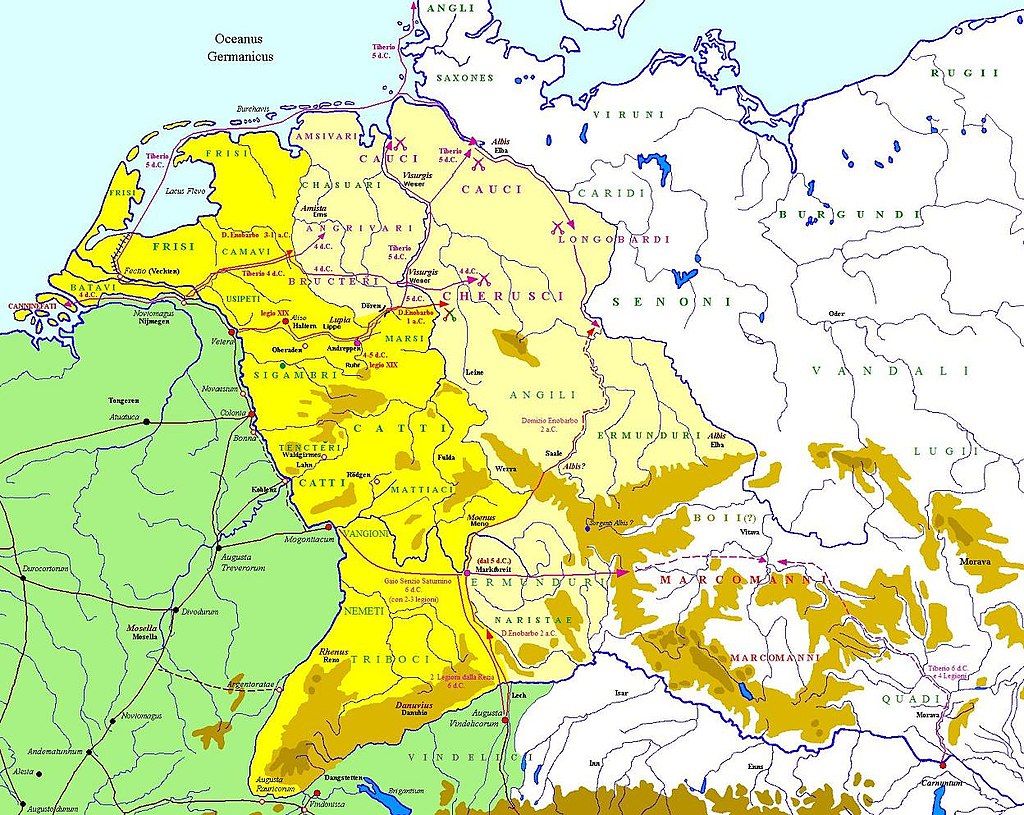
Map – Wikimedia Commons
The display board are tremendously informative and contain a wealth of information about the site and the Roman Army in general at the turn of the Millennium, complete with reconstructions of all kinds, referenced to scholarly works.
